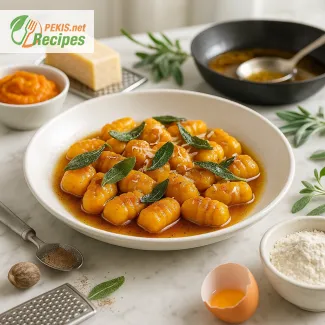
Timeless Italian Flavor in Every Layer
Discover the rich heritage of classic Lasagna alla Bolognese with creamy béchamel
Few dishes embody the spirit of Italian culinary tradition quite like authentic Lasagna Bolognese with béchamel sauce. This hearty, comforting classic—often passed down through generations—is more than just a meal; it’s a celebration of time-honored techniques, patience, and regional flavors that have become loved around the globe. Known for its distinct layers of slow-simmered Bolognese, delicate béchamel, and sheets of fresh pasta, this dish is a staple in northern Italian cuisine, especially in the Emilia-Romagna region, where it originated.
Unlike quick, modern lasagna versions that may rely on ricotta or shortcut sauces, the traditional Lasagna alla Bolognese is defined by its velvety béchamel sauce—known in Italian as besciamella—and a rich, meat-forward ragù alla Bolognese that simmers for hours to develop its depth. The combination results in a lasagna that’s not only deeply flavorful but also exceptionally balanced in texture and taste. The creamy béchamel complements the robust meat sauce beautifully, creating layers that melt together with each bite.
The heart of Bolognese: a slow-cooked meat sauce done right
At the core of this lasagna is the Bolognese ragù, a slow-cooked mixture of finely chopped beef, pork, aromatic vegetables, tomato paste, and a touch of milk. Each ingredient plays a vital role in building the sauce's complexity. The finely diced soffritto—onions, carrots, and celery—are gently sautéed to release their natural sweetness. The addition of white wine adds acidity and brightness, while a hint of milk helps round out the acidity of the tomatoes, giving the sauce a rich, silky mouthfeel.
A proper Bolognese sauce requires time and care. It’s not simply cooked—it’s nurtured. Over a low flame, the sauce thickens slowly, reducing into a deeply savory, umami-rich base that becomes the signature flavor of the dish. When paired with the gentle, creamy béchamel and tender pasta sheets, it delivers the unmistakable essence of authentic Italian lasagna.
Why béchamel makes all the difference
One of the key features that sets this traditional lasagna apart is the béchamel sauce. Unlike ricotta-based lasagnas often seen in other parts of the world, the Italian original relies on a buttery, smooth white sauce made with milk, butter, and flour. This French-influenced component, widely adopted in Italian cuisine, adds not just moisture but also a refined silkiness that balances the hearty meat sauce.
When layered between the Bolognese and pasta, béchamel acts as the glue, marrying all elements together into a harmonious whole. Its neutral, creamy character complements the ragù perfectly, creating contrast and cohesion at the same time. The result is a dish that feels indulgent without being heavy—rich but never overwhelming.
Handcrafted pasta sheets: the unsung hero
Another crucial aspect of authentic Lasagna alla Bolognese is the fresh pasta sheets, often made from scratch using only flour and eggs. These delicate layers are typically rolled thin, providing structure while absorbing flavors from the sauces. Their tender-yet-al-dente texture is what allows this lasagna to hold its shape beautifully after baking, while still offering a melt-in-your-mouth quality in every forkful.
Homemade pasta makes a noticeable difference, offering a chew and bite that dried pasta often lacks. And though it’s perfectly acceptable to use high-quality store-bought sheets in a pinch, there’s a certain satisfaction that comes with crafting every layer by hand. The pasta not only carries the sauces—it becomes one with them, forming a cohesive, luxurious dish that’s truly restaurant-quality.
A lasagna rooted in tradition, perfect for celebration
This lasagna isn’t fast food—it’s slow food in its purest form. A dish for Sunday lunches, festive gatherings, or holidays when families come together around the table. Every step—from dicing the vegetables for the soffritto to stirring the béchamel until it reaches just the right consistency—demands intention. The reward is a soul-warming dish that brings joy with every serving.
Traditionally baked in a rectangular ceramic dish and allowed to rest before serving, this lasagna slices into perfect portions, each showcasing golden, crisped edges and layers that are unmistakably handmade. A final sprinkle of grated Parmigiano Reggiano on top forms a delicate crust that adds flavor and texture with every bite.
Beyond the basics: elevate your lasagna
To bring out the full expression of Lasagna alla Bolognese, choose ingredients that honor the original spirit of the dish. Use high-quality ground meats, whole milk, freshly grated nutmeg in the béchamel, and Parmigiano Reggiano aged for at least 24 months. Consider letting the lasagna rest after baking—it allows the layers to settle, making it easier to slice and even more flavorful.
While it’s tempting to take shortcuts, the beauty of this dish lies in its attention to detail. From the texture of the meat sauce to the silkiness of the béchamel and the resilience of the pasta, each element deserves time and care. The result is a culinary experience that is far greater than the sum of its parts: a true representation of Italian comfort food done with pride and precision.
What makes this lasagna truly authentic
Not all lasagnas are created equal, and authentic Lasagna Bolognese with béchamel stands in a league of its own. This isn’t just a layered pasta dish—it’s a gastronomic symbol of Italian craftsmanship, tradition, and love for cooking from scratch. There’s no ricotta, no shortcuts, and certainly no compromises—only real, honest flavors developed slowly and with care.
Whether you’re preparing this for a special occasion or simply craving an elevated homemade meal, this lasagna brings together the best of Italian cooking. It’s a dish that tells a story—of family, of patience, and of generations who perfected the art of layering flavor, one sheet at a time.
1. Prepare the Bolognese sauce:
Heat olive oil in a large heavy-bottomed saucepan. Add finely chopped onion, carrot, and celery. Sauté over medium heat for about 10 minutes until softened but not browned. Add minced beef and pork, stirring to break up the meat. Cook until browned, about 8–10 minutes. Add tomato paste and stir to coat the meat. Pour in the white wine and let it evaporate for 2–3 minutes. Reduce the heat to low and add the milk, salt, and pepper. Cover partially and let it simmer gently for about 60–75 minutes, stirring occasionally until thick and rich.
2. Prepare the béchamel sauce:
In a medium saucepan, melt the butter over low heat. Add the flour and whisk continuously for 2 minutes to form a smooth roux. Gradually pour in the milk while whisking to avoid lumps. Increase heat to medium and cook, stirring constantly, until the sauce thickens—about 8–10 minutes. Season with salt and freshly grated nutmeg. The consistency should be smooth and slightly thick but pourable.
3. Pre-cook lasagna sheets (if necessary):
If using dried or semi-fresh lasagna sheets, cook them in boiling salted water for 2–3 minutes until just pliable. Drain and lay on a clean kitchen towel to prevent sticking.
4. Assemble the lasagna:
Preheat the oven to 180°C (350°F). Grease a rectangular baking dish (approx. 30 x 20 cm / 12 x 8 inch) with butter. Begin with a spoonful of béchamel spread across the bottom.
- Place the first layer of lasagna sheets.
- Spread a layer of Bolognese sauce, then a layer of béchamel sauce.
- Sprinkle some grated Parmigiano Reggiano.
- Repeat for 4–5 layers, finishing with béchamel and Parmigiano on top.
5. Bake the lasagna:
Place the dish in the preheated oven and bake for 40–45 minutes, until the top is golden and bubbling. If needed, broil for an additional 2–3 minutes for extra color. Let rest 10–15 minutes before slicing.
Expert Secrets to Elevate Your Lasagna Bolognese to Perfection
Transform your traditional lasagna with simple changes that bring gourmet results
The classic Lasagna Bolognese with béchamel sauce is already a culinary masterpiece rooted in tradition. But even the most iconic recipes can benefit from small, thoughtful enhancements. Whether you're an experienced cook or a passionate home chef, learning how to refine this dish can make a remarkable difference in flavor, texture, and overall satisfaction.
This guide explores practical and professional tips to improve the recipe without losing its authenticity. From ingredient upgrades to modern twists, every suggestion is designed to enhance the essence of this beloved Italian favorite.
Why homemade lasagna always tastes better
There’s something uniquely comforting about a homemade lasagna. It's not just the fresher ingredients or the control you have over each element—it’s the layering of intention, care, and quality. When you create it from scratch, you’re using real meat, real cheese, and hand-prepared sauces that avoid artificial preservatives or stabilizers.
Homemade béchamel, for instance, provides a velvety richness that can’t be matched by pre-made white sauces. Likewise, the Bolognese sauce, when made slowly and carefully, carries deeper umami and complexity than store-bought versions. Using fresh lasagna sheets or making your own pasta dough from scratch gives your dish a delicate structure that elevates every bite.
Moreover, a homemade lasagna lets you adjust the seasoning, fat content, and balance between layers to your preference—something that even the best restaurant versions can’t replicate.
Ingredients that change everything: upgrades and enhancements
While the traditional recipe is tried and true, a few upgrades can take your lasagna to a whole new level.
Add pancetta or prosciutto to the ragù
For added depth and richness, try sautéing diced pancetta or prosciutto with the soffritto. These cured meats contribute a salty, umami-forward base that enhances the overall savoriness of the Bolognese sauce. Just 50–80 g can dramatically shift the complexity of the dish.
Swap white wine for red
Although traditional ragù often includes white wine, substituting red wine (such as Chianti or Barbera) can create a bolder, more robust flavor profile. Red wine brings out the earthy richness of the meat and adds depth that pairs beautifully with tomato paste and beef.
Enrich the béchamel with cheese
Adding a handful of grated Parmigiano Reggiano or Grana Padano into the béchamel transforms it into a cheesy mornay-style sauce. This adds another layer of umami and gives the béchamel more character. For a sharper taste, consider a touch of aged Pecorino Romano.
Fresh herbs: timing is key
Use bay leaves and a small sprig of thyme while simmering the ragù to infuse aromatic depth. However, fresh basil or parsley should be added just before assembling the lasagna or even sprinkled on top after baking to maintain their fresh flavor and color.
Roasted garlic instead of raw garlic
Rather than sautéing chopped raw garlic, try using roasted garlic paste in your ragù. It provides a sweeter, more caramelized flavor that blends harmoniously with the meat and tomato base without overpowering the sauce.
Common mistakes to avoid for flawless results
Many home cooks struggle to perfect the texture and structure of their lasagna. Here are a few pitfalls to avoid:
Using too much sauce
While it may seem tempting to pile on sauce, excessive moisture can lead to a soupy or soggy lasagna. Use just enough ragù and béchamel to coat each layer thinly and evenly, allowing the pasta to hold everything together.
Not letting the lasagna rest before cutting
One of the most overlooked steps is resting the lasagna after baking. Let it sit for at least 10–15 minutes before slicing. This helps the layers set and prevents the dish from collapsing or oozing out when served.
Skipping seasoning between layers
Even if the sauces are well-seasoned, lightly seasoning each pasta layer with a touch of salt and pepper can balance flavors throughout and prevent bland spots.
Underbaking or overbaking
An undercooked lasagna may be chewy and cold in the center, while an overcooked one becomes dry and rubbery. Stick to the recommended baking time and temperature, and check for bubbling edges and a golden top to signal readiness.
Health-conscious variations without sacrificing taste
If you're looking to lighten up your lasagna while maintaining the same luxurious feel, there are several strategies to consider.
Use leaner meats or plant-based alternatives
Swap standard ground beef and pork with lean turkey, chicken, or plant-based mince to reduce saturated fat. Modern meat substitutes now offer excellent texture and flavor retention, making them suitable even for traditional dishes.
Low-fat béchamel
Prepare a lighter béchamel by using low-fat milk and olive oil instead of whole milk and butter. While it won’t be as creamy, seasoning it well with nutmeg and white pepper helps preserve the classic taste.
Add vegetables between layers
Incorporate grilled zucchini, eggplant, spinach, or even mushrooms into the layering. This boosts the fiber and micronutrient profile of your lasagna while also adding texture and moisture naturally.
Whole wheat or gluten-free pasta
Use whole wheat lasagna sheets for more fiber, or try gluten-free varieties made from rice, corn, or lentils. Be sure to adjust cooking times if using alternative pasta to prevent drying out or overcooking.
Flavor enhancers for a gourmet finish
Small touches can make your lasagna stand out.
Infuse the béchamel with aromatics
Simmer the milk with a bay leaf, a pinch of clove, or even a slice of onion before adding it to the roux. This classical French technique, called infusion, brings out a subtle aromatic depth in the béchamel.
Add a touch of nutmeg and white pepper
These two spices in the béchamel elevate the dish, lending a warm, slightly peppery edge that complements the richness of the cheese and meat.
Finish with butter flakes
Dotting the top of your lasagna with small flakes of cold butter before baking creates a golden, crisp crust that adds texture and a glossy finish.
Serving tips and pairing ideas
Serve lasagna with a simple arugula salad, dressed lightly with lemon and olive oil, to cut through the richness. Pair it with a medium-bodied Italian red wine, like Sangiovese, for a balanced meal that reflects the dish’s regional roots.
For an added touch, sprinkle fresh parsley and an extra grating of Parmigiano over each portion just before serving. This not only enhances the appearance but also revives the top-layer aroma with a burst of freshness.
An evolving classic worth mastering
Mastering Lasagna Bolognese with béchamel means respecting tradition while embracing the potential for innovation. By adjusting a few key components, using quality ingredients, and paying close attention to technique, you can create a version of this iconic dish that’s both true to its roots and uniquely your own. Every improvement, no matter how small, contributes to a memorable and refined culinary experience.
Allergens present in the recipe:
- Gluten: from pasta sheets and flour
- Dairy: from butter, milk, and cheese
Tips to eliminate allergens and gluten:
- Use gluten-free lasagna sheets and rice flour for the béchamel to eliminate gluten.
- Replace milk and butter with plant-based milk (e.g., oat or almond) and vegan margarine for a dairy-free version.
- Use nutritional yeast instead of Parmigiano for a dairy-free topping.
- Vitamin A: 950 µg – supports vision and immune function
- Vitamin B12: 1.8 µg – crucial for red blood cell formation
- Calcium: 280 mg – supports bone health
- Iron: 4.1 mg – helps oxygen transport in blood
- Zinc: 5.3 mg – important for immunity and wound healing
- Magnesium: 42 mg – contributes to nerve and muscle function
- Beta-carotene: 3.2 mg – protects cells from oxidative stress
- Lycopene: 5.6 mg – supports heart health and reduces inflammation
- Vitamin E: 1.5 mg – helps protect cell membranes from damage
- Selenium: 18 µg – boosts antioxidant defense and supports thyroid function





